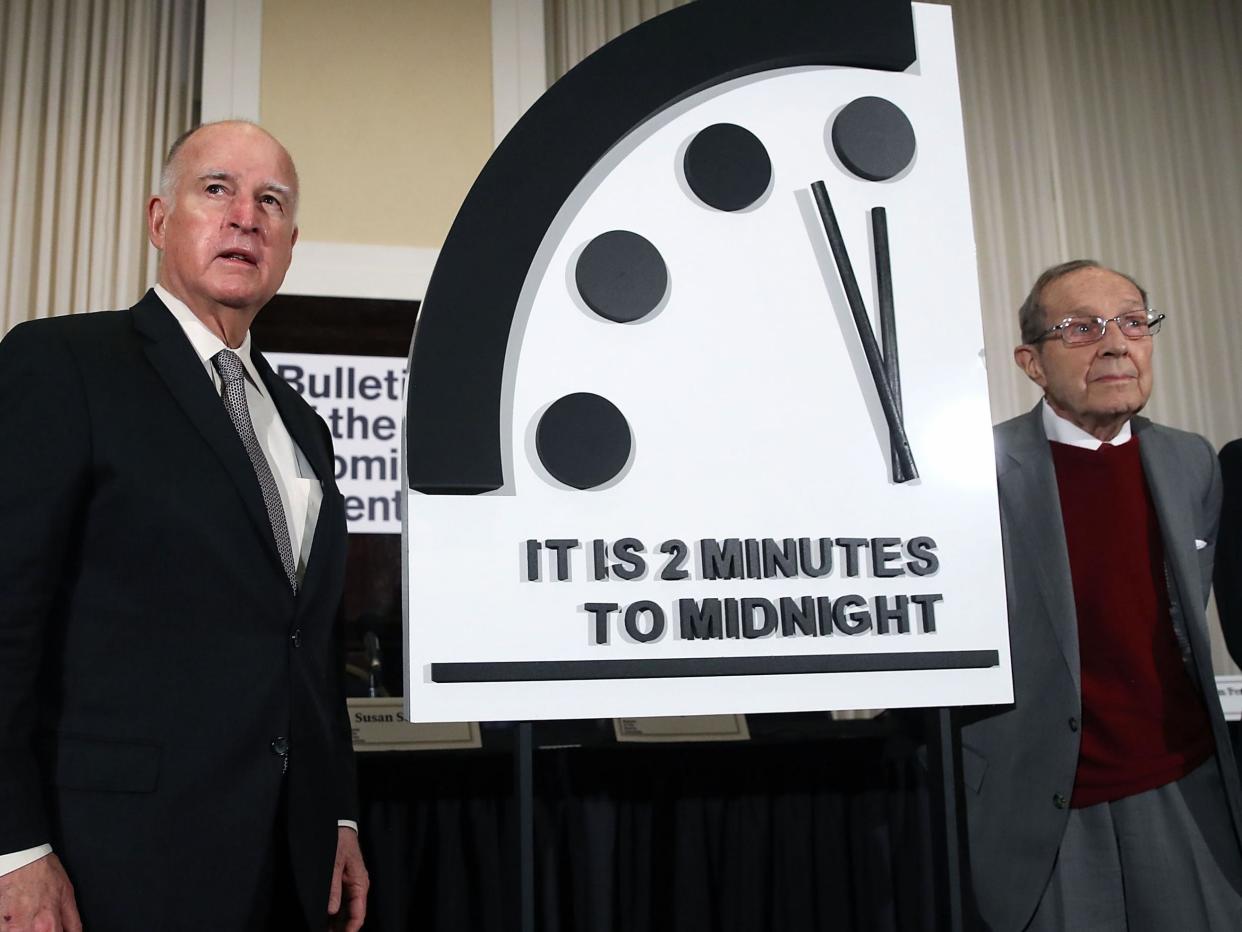Doomsday Clock 2020: Will the world move one step closer to annihilation this year?

After a year in which the true extent of the climate emergency has been realised and increasing threats of international war, esteemed scientists and political leaders are set to announce their judgement this week on how close the world is to global disaster.
For more than 70 years, the “Doomsday Clock” has been a symbol for the likelihood of a man-made international catastrophe that could threaten to destroy humanity.
The clock’s minute hand was originally set at seven midnight to midnight – the point of a hypothetical world-wide disaster – in 1947 and has moved forward and backwards 23 times in the years since then.
Officials from the Bulletin of the Atomic Scientists, a non-profit organisation concerned with global security issues, determine the time on the clock through a number of factors, including the risk of nuclear war and climate change, which pose a threat to humanity.
On Thursday, the Bulletin will gather to announce whether the minute hand of the clock will move one step closer to midnight.
What is the current time on the clock?
The Doomsday Clock remained at two minutes to midnight for the second consecutive year in 2019 as the Bulletin cited a “new abnormal” of existential threats from nuclear weapons and climate change.
“Humanity now faces two simultaneous existential threats, either of which would be cause for extreme concern and immediate attention,” a statement from the organisation warned.
“These major threats – nuclear weapons and climate change – were exacerbated this past year by the increased use of information warfare to undermine democracy around the world.”
The Bulletin added that the lack of movement was not a cause for relief and called on world leaders to “seek change” and for citizens to “demand it”.
Have we ever been this close to midnight before?
Yes, but only once in 1953 during the Cold War. The current time is part of movement towards increased risk in recent years, after the Doomsday Clock moved forward in 2015 (to three minutes) and again in 2017 (to two and a half minutes).
The clock hand has also been much further away from midnight in the past, with the largest number of minutes to midnight being recorded in 1991 at 17 minutes.
For much of the 1990s, the clock hand remained at least 10 minutes away from midnight following the end of the Cold War.
Will the clock move forward?
The Bulletin will explain its reasoning for its decision tomorrow but it does not look likely that the clock will move back this year.
With devastating bushfires in Australia, heightened tensions between the US and Iran, and renewed threats of nuclear testing by North Korea, the world does not appear to be any safer than it was 12 months ago.
Although world leaders have begun to discuss climate change with more urgency, there has been little progress on agreeing detailed measures to protect the environment and limit global warming.
The minute hand is likely to remain in the same position or move forward, putting humanity at its closest point to annihilation in the clock’s history.
Who sets the clock?
The clock’s time is decided by the Bulletin of the Atomic Scientists’ Science and Security Board in consultation with the Bulletin’s Board of Sponsors, a group of advisers which contains 13 Nobel Laureates.
Thursday’s event will also see speeches from a number of former political leaders, such as Ban Ki-moon, the former UN secretary-general, Mary Robinson, the former president of Ireland, and Jerry Brown, the former governor of California.
Read more
Humanity as close to catastrophe as it has ever been, scientists say

